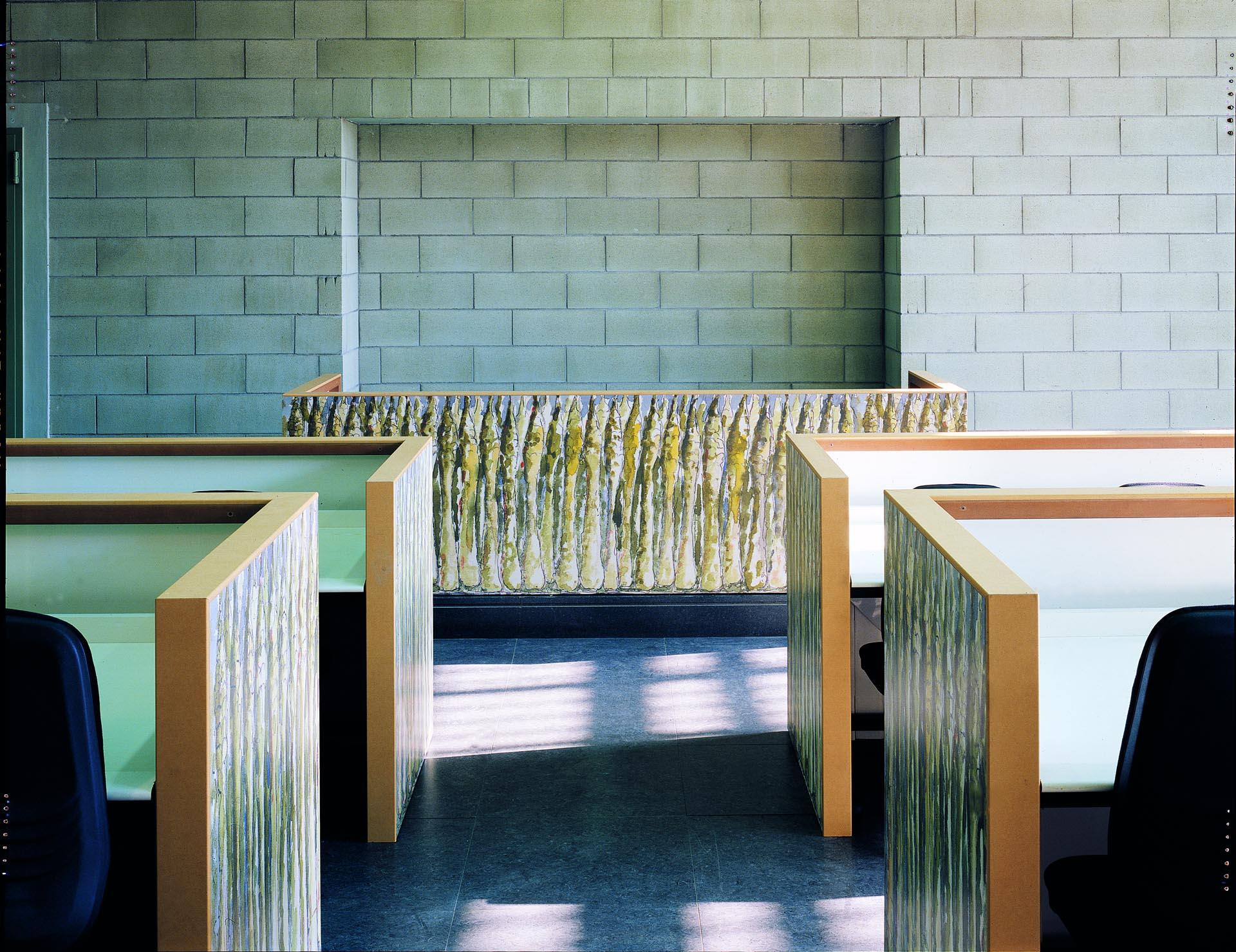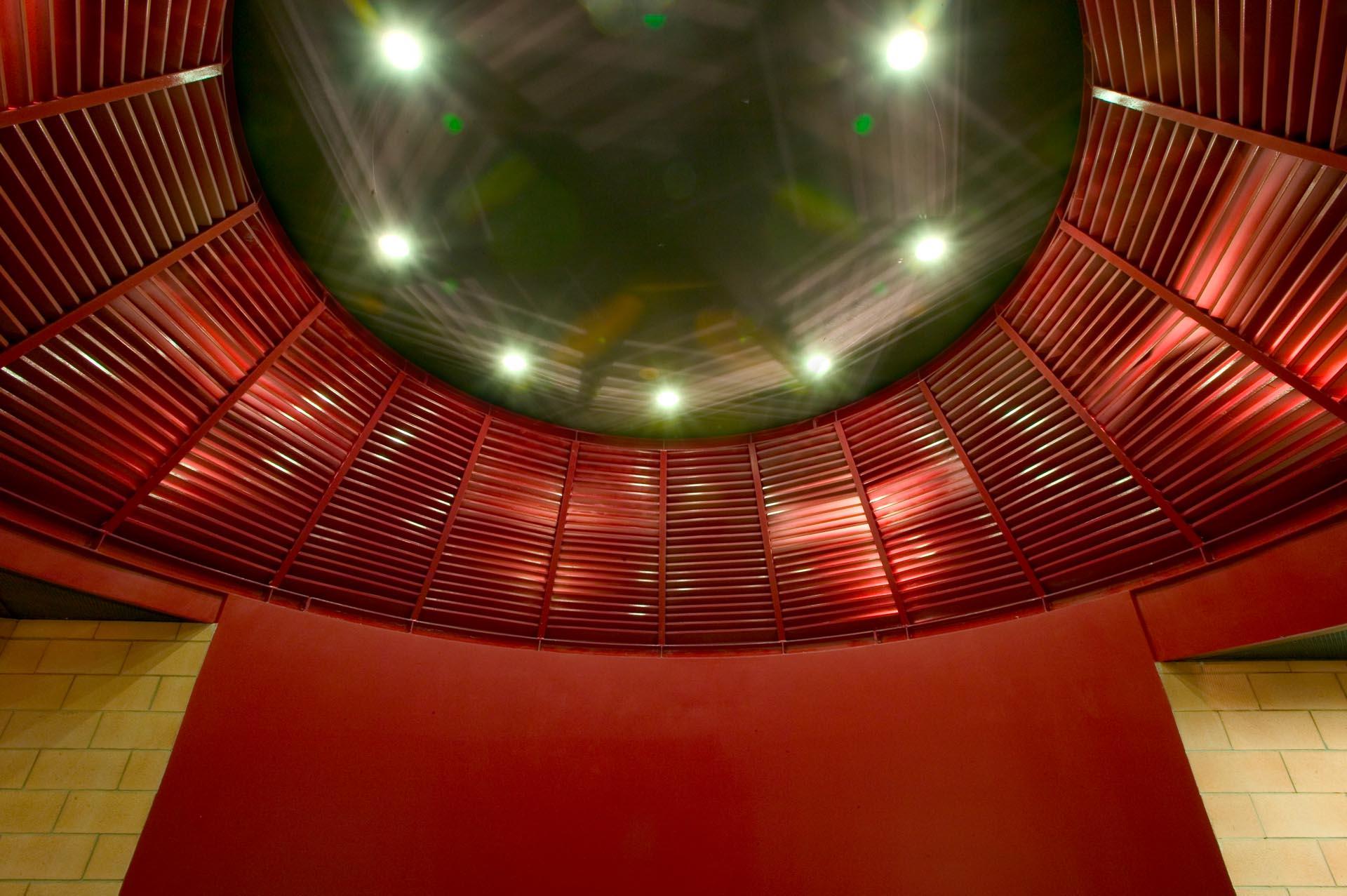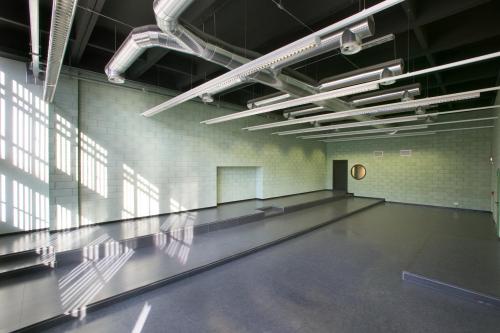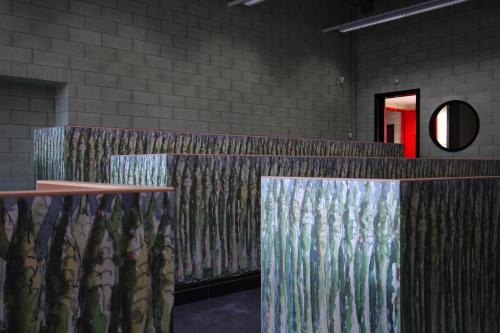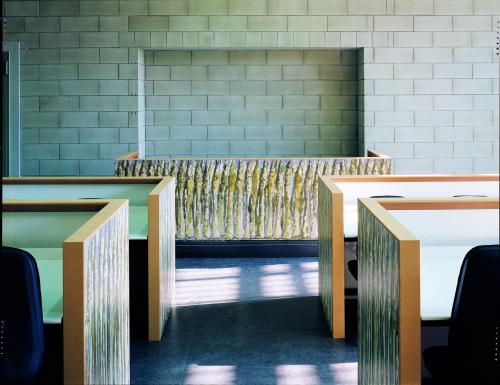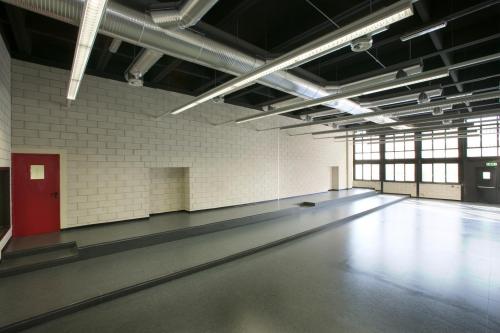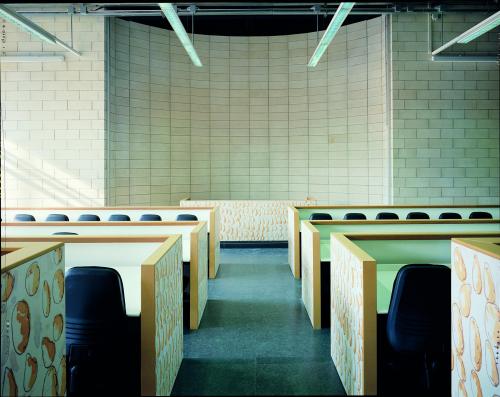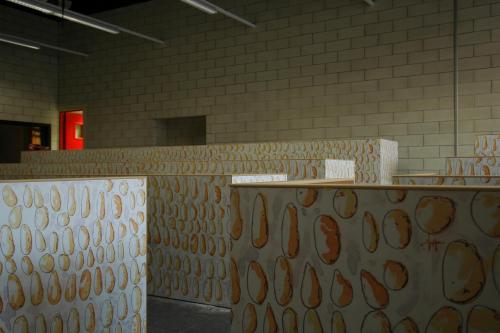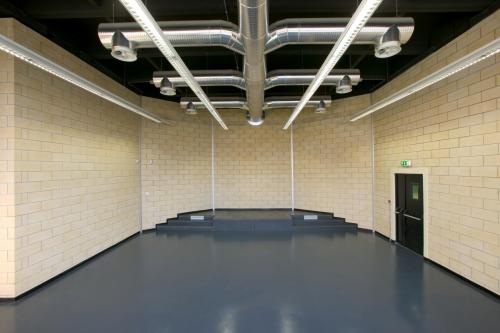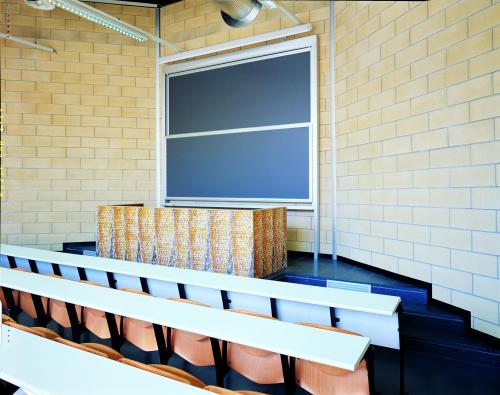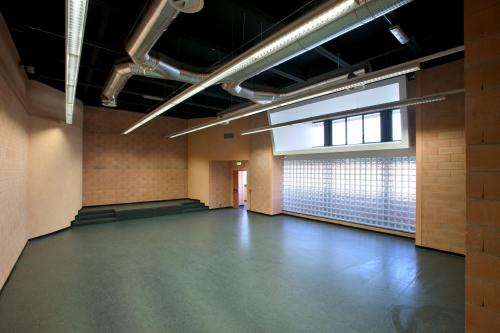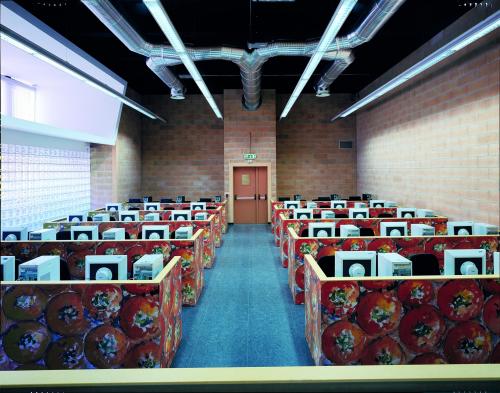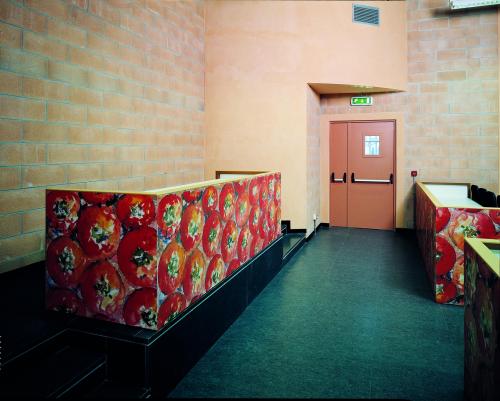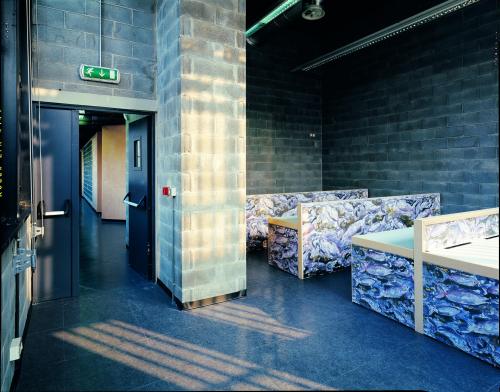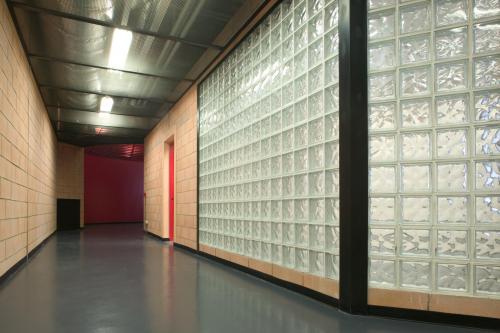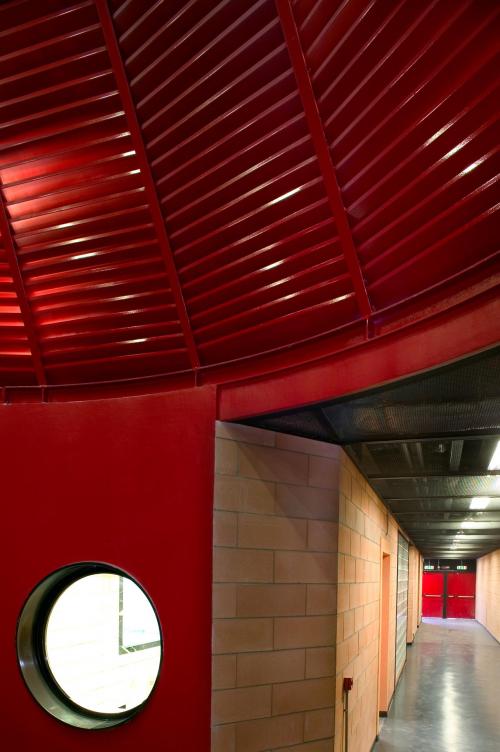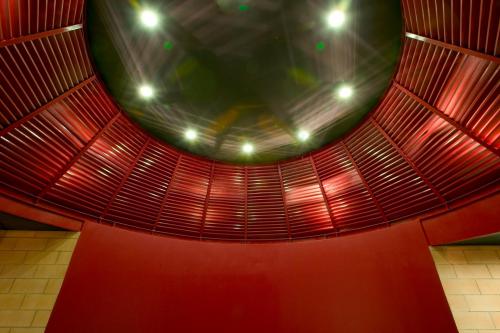architecture
Dipartimento Informatica - Torino
Aule universitarie al “Piero della Francesca” Torino
cantiere: 2002-2005
All’interno di uno spazio unico di mille metri quadrati, lasciato al “rustico” al momento della costruzione, ed in origine destinato a magazzino, sono state realizzate aule didattiche ed aule-laboratorio gradonate per il Dipartimento universitario di Informatica. Le aule s’incastrano – come le tessere di un puzzle – le une nelle altre, variando sia il colore (mediante l’utilizzo di blocchi di cls faccia-a-vista colorati in pasta) che la tipologia del volume nell’intorno delle cattedre. I locali tecnici ed i servizi igienici sono stati allocati nelle aree più buie, lontane dalle finestre. Un tholos rosso pompeiano, a pianta circolare e cupola metallica alettata tronco-conica, caratterizza il corridoio di distribuzione, mentre per portare la luce naturale e l’aria esterna nell’aula più a nord-ovest è stato realizzato un “cannocchiale” tronco-piramidale. I percorsi esterni alle aule sono stati controsoffittati con reti metalliche romboidali, lasciando trasparire i canali di ventilazione soprastanti, per mantenere il carattere “industriale” dello spazio.
Turin, the ‘Spina 3’ link road, the Piero della Francesca complex: university lecture halls and laboratories for the university’s IT department. The lecture halls are wedged into one another like the pieces of a puzzle inside a single, 1000 square metre rectangle, left unfinished after construction and originally designed as a warehouse. Each room differs in colour, size and geometry of the space around the lecturer’s desk: a kind of apse-exedra. The distribution routes, services and technical rooms have been located in the darker areas, away from the big, bright windows. In this way the lecture halls receive the natural light that enters through their perimeter from outside. The reference colour that distinguishes one lecture hall from another is evident both in the masonry, in tinted concrete blocks, the entrance doors and the seating panel cladding. The seating is made with high pressure laminates printed in four colours with original designs specially created for this project. There is thus a yellow room, a green one, a white one, a vermilion one and a grey area reserved for studying. The surfaces of the fittings then evoke some typical natural ingredients of Piedmont cuisine: the laminate in the yellow room suggests corn cobs, the green laboratory-lecture hall refers to asparagus, while the white room recalls beans, the vermilion one tomatoes and the grey study area anchovies. The corridor is distinguished by a circular tholos (pompeian red tholos with a slatted metal, truncated cone dome, creating a kind of internal piazza, which contains the information, control and laboratory management point. A truncated pyramid ‘spyglass’ that straddles a corridor has been created to bring natural light and fresh air into the north-west room. The external passages to the lecture halls have been fitted with false ceilings with metal rhombus grids, leaving the ventilation ducts above visible to maintain the ‘industrial’ character). The silvery ventilation ducts then come into view in the lecture halls, geometrically enlivening and enriching these with bright reflections or black ceilings. The lighting inside the laboratory-lecture halls has a brightness intensity regulation system with infrared control. Access to the laboratory-lecture halls from the adjacent block of traditional university lecture halls and the E.D.I.S.U. study room is controlled and regulated with sophisticated equipment.
Dans un grand espace rectangulaire les salles de classe sont assemblées les unes dans les autres comme les pièces irréguliers d'un puzzle. Chaque salle diffère par couleur, dimension et par organisation géometrique de l'espace autour des bureaux: un espèce de abside/exèdre.
Un tholos rouge constitu le foyer ou centre du système de distribution, de controle et de gestion des laboratoires.

